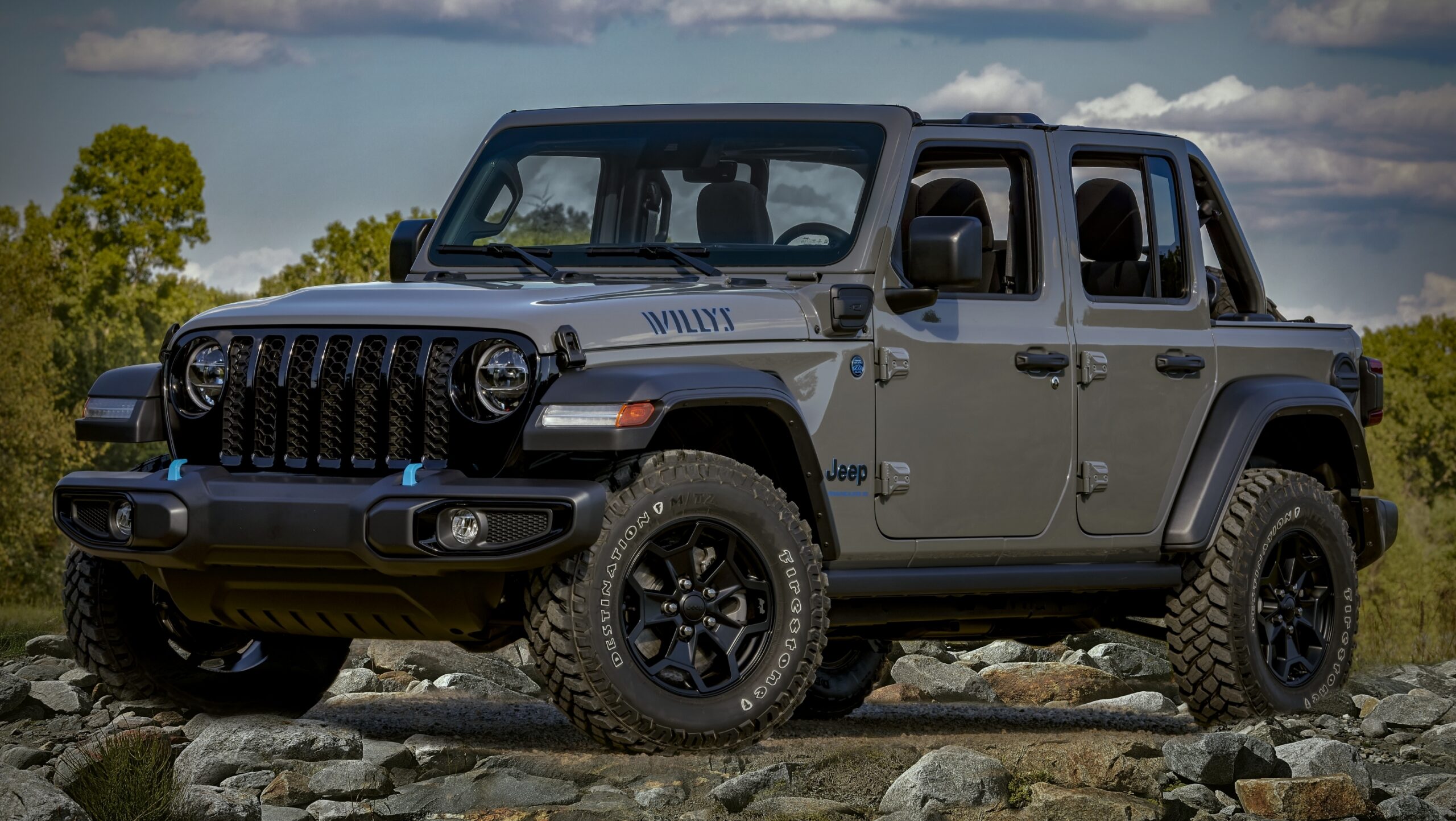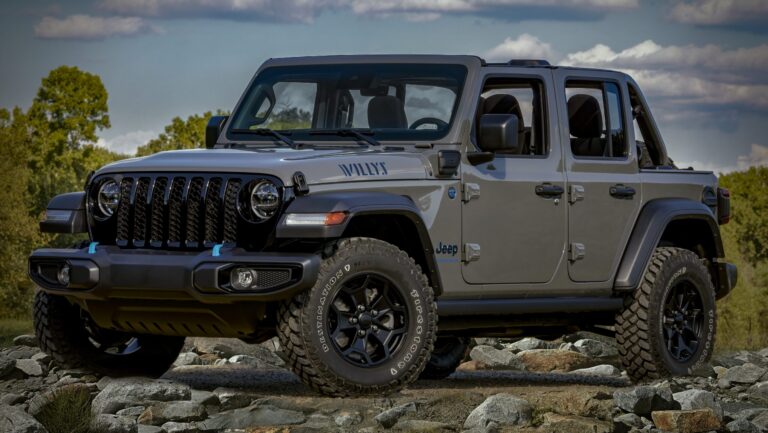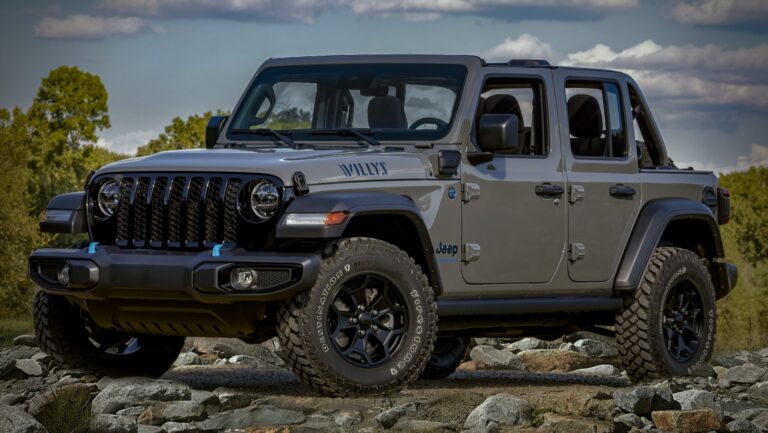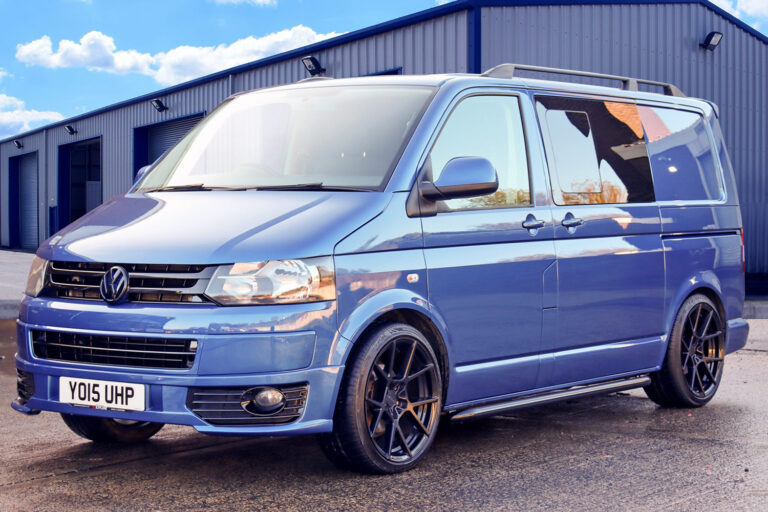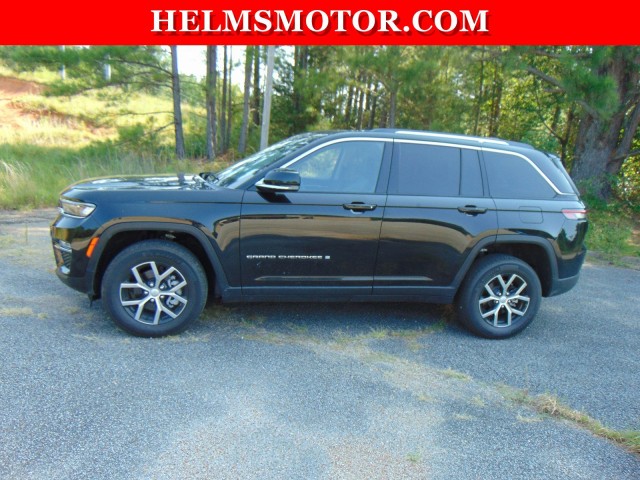Jeep Stroker Engine For Sale: Unleash the True Potential of Your Off-Road Beast
Jeep Stroker Engine For Sale: Unleash the True Potential of Your Off-Road Beast /jeeps.truckstrend.com
For generations, the Jeep has been synonymous with rugged capability, off-road prowess, and an adventurous spirit. Yet, even the most beloved Jeep models can sometimes leave owners wanting more – more power, more torque, and more confidence when tackling challenging terrain or merging onto a busy highway. This desire for enhanced performance often leads enthusiasts down the path of engine modifications, and for many Jeep owners, particularly those with the legendary 4.0L inline-six, the answer lies in the Jeep Stroker Engine.
A stroker engine is a high-performance variant of an existing engine block, achieved by increasing its displacement. This is primarily accomplished by installing a crankshaft with a longer "stroke" (the distance the piston travels), coupled with appropriately sized connecting rods and pistons. The result is a larger engine volume, which translates directly into a significant boost in horsepower and, more importantly for Jeeps, a dramatic increase in low-end torque. For those seeking to transform their capable but sometimes underpowered Jeep into an absolute powerhouse, a stroker engine is not just an upgrade; it’s a fundamental metamorphosis, breathing new life and capability into their cherished vehicle.
Jeep Stroker Engine For Sale: Unleash the True Potential of Your Off-Road Beast
This comprehensive guide will delve into everything you need to know about Jeep stroker engines for sale, from understanding their mechanics and benefits to navigating the buying process, considering crucial supporting modifications, and ensuring long-term reliability.
Understanding the Jeep Stroker Engine: More Cubic Inches, More Power
At its core, a stroker engine is about maximizing the output of a given engine block. For the Jeep community, the 4.0L AMC I6 engine, found in popular models like the Cherokee XJ, Wrangler YJ/TJ, and Grand Cherokee ZJ, is the prime candidate for this modification. While the factory 4.0L is known for its legendary durability, its power output, especially its torque curve, can feel inadequate for Jeeps running larger tires, heavier armor, or those used for serious rock crawling or towing.
The stroker conversion typically involves:
- A new crankshaft: This is the heart of the stroker. A crankshaft designed for a longer stroke increases the displacement. For the 4.0L, common stroker cranks come from 4.2L (258 ci) Jeep engines or custom aftermarket units.
- Custom connecting rods: These rods connect the pistons to the crankshaft. Depending on the crank and piston choice, custom-length rods are often required to maintain proper piston deck height.
- Matching pistons: New pistons are usually needed to accommodate the longer stroke and often feature different compression ratios or skirt designs.

By combining these components, a 4.0L engine can be "stroked" to displacements ranging from 4.6L, 4.7L, 4.9L, or even up to 5.0L. Each increase in displacement translates to more air and fuel burned per combustion cycle, directly resulting in more power and torque.
Why Choose a Jeep Stroker Engine? Benefits That Matter
The decision to invest in a Jeep stroker engine is driven by a host of compelling advantages that fundamentally enhance the vehicle’s performance:
- Massive Torque Gains: This is the primary reason for a stroker in a Jeep. Increased displacement directly leads to significantly more low-end torque. This means easier rock crawling, less throttle needed for obstacles, better hill climbing, and effortless acceleration even with large tires.
- Increased Horsepower: While torque is king for off-roading, a stroker also delivers a healthy boost in horsepower, improving highway passing, acceleration, and overall driving dynamics.
- Enhanced Towing Capacity: The added torque makes towing trailers, boats, or other vehicles a much more manageable and safer endeavor.
- Cost-Effective V8 Alternative: For many Jeep owners, a stroker engine offers a compelling alternative to a full V8 engine swap. It’s often more affordable, requires less fabrication (retaining the original engine mounts, bell housing, and often exhaust routing), and can be completed without major drivetrain modifications if built correctly.
- Retains OEM Look & Feel: Unlike a V8 swap that might require cutting, welding, and extensive re-engineering, a stroker keeps the original engine’s appearance and retains much of the original character of the vehicle.
- Improved Daily Drivability: Beyond off-road benefits, the extra power makes a Jeep much more enjoyable and less fatiguing for daily commuting, especially at highway speeds.
Key Considerations When Buying a Jeep Stroker Engine
Acquiring a stroker engine is a significant investment, and careful consideration is paramount. Here’s what you need to evaluate:
- New vs. Rebuilt vs. Used:
- New (Custom Built): Typically from reputable engine builders. Offers the highest quality, customization options, and often the best warranty. Most expensive.
- Rebuilt (Remanufactured): A used core engine that has been completely disassembled, inspected, machined, and reassembled with new components. A good balance of cost and reliability, but quality varies by builder.
- Used (Pull-Out): Rarely recommended for strokers unless from a known source with full documentation and a very low price. Risks are high as you don’t know the build quality or internal wear.
- Displacement Options (4.6L, 4.7L, 4.9L, 5.0L):
- 4.6L/4.7L: Most common and well-rounded. Excellent torque gains without excessive stress on the rest of the drivetrain. Generally easier to tune.
- 4.9L/5.0L: Maximize displacement for the 4.0L block. Deliver immense power but often require more aggressive supporting modifications, highly specialized tuning, and can put more stress on transmissions and axles.
- Components & Quality:
- Crankshaft: Forged steel is superior for strength and durability, especially for higher displacements or heavy-duty use. Cast iron is acceptable for milder builds.
- Connecting Rods & Pistons: Forged components offer superior strength. Hypereutectic pistons are a good balance of strength and cost for most builds.
- Cylinder Head Work: Porting, polishing, and larger valves can significantly improve airflow and power.
- Camshaft: A custom-ground camshaft is crucial for a stroker to optimize the power band for increased displacement.
- Fuel Injectors & Throttle Body: Larger injectors and a bored throttle body are essential for proper fuel delivery and airflow.
- Engine Builder Reputation: This is perhaps the most critical factor. Research builders thoroughly. Look for extensive experience with Jeep strokers, positive reviews, clear communication, and transparent build processes.
- Warranty: Understand what the warranty covers, for how long, and what voids it. A good warranty offers peace of mind.
- Compatibility: Ensure the engine is compatible with your specific Jeep model, year, and existing transmission (manual or automatic).
- Emissions Compliance: Very important in states with strict emissions testing. Some stroker builds might not pass without specific catalysts or tuning. Discuss this with your builder.
- Budget: Beyond the engine itself, factor in shipping, installation costs, and necessary supporting modifications (see next section).
The Installation Process and Essential Supporting Modifications
While the article focuses on "Jeep Stroker Engine For Sale," understanding the context of installation and supporting mods is crucial for any potential buyer. A stroker engine is not a simple bolt-in affair if you want optimal performance and longevity.
- Professional Installation: Unless you possess advanced mechanical skills, a well-equipped shop, and specialized tools, professional installation by a reputable mechanic or performance shop is highly recommended.
- Required Supporting Modifications: To fully capitalize on the stroker’s power and ensure reliability, several components often need upgrading:
- Fuel System: Larger fuel injectors are a must. An upgraded fuel pump might also be necessary.
- Exhaust System: A performance header and a larger diameter exhaust system (2.5-inch or 3-inch) will allow the engine to breathe better and unleash more power.
- Cooling System: Increased power generates more heat. A heavy-duty radiator, high-flow water pump, and upgraded fan clutch are highly recommended to prevent overheating.
- Engine Management & Tuning: This is critical. A stroker engine requires a custom tune (reflashing the ECU or adding a piggyback module) to properly manage fuel delivery, ignition timing, and air-fuel ratios. Without proper tuning, performance will be suboptimal, and engine damage is a risk.
- Transmission & Drivetrain: While many stock transmissions (like the AX-15 manual or AW4 automatic) can handle moderate stroker power, heavy off-roading or extreme power levels might necessitate upgrades to the transmission, transfer case, driveshafts, and axles.
Finding a Jeep Stroker Engine For Sale: Where to Look
When you’re ready to buy, knowing where to search is key:
- Specialized Engine Builders: This is the most reliable source for new or meticulously rebuilt stroker engines. Reputable names in the Jeep stroker community include ATK, Golen Engine Service, Hesco, S&J Engines, and local performance shops specializing in Jeeps. They offer complete long blocks or even turn-key engines.
- Online Marketplaces: Websites like eBay, Craigslist, dedicated Jeep forums (e.g., NAXJA, JeepForum), and Facebook Marketplace can list used or rebuilt strokers. Exercise extreme caution and request extensive documentation, videos, and photos. Always try to inspect in person if possible.
- Local Performance Shops: Many local engine builders or off-road shops can build a custom stroker for you, often using your existing core engine. This allows for direct communication and local support.
When evaluating a listing, look for detailed specifications: displacement, components used (forged/cast), dyno sheets (if available), mileage (if used), warranty information, and what’s included (e.g., long block, short block, complete with accessories).
Maintaining Your Stroker Engine for Longevity
A properly built and tuned stroker engine can be as reliable as a stock engine, but consistent maintenance is key:
- Regular Oil Changes: Use high-quality synthetic oil at recommended intervals. The added stress on components warrants premium lubrication.
- Monitor Cooling System: Keep an eye on coolant levels and engine temperatures. Address any overheating issues immediately.
- Check Vital Signs: Periodically monitor oil pressure, coolant temperature, and any unusual noises.
- Proper Tuning: Ensure your tune remains optimal. If you add significant modifications (e.g., turbo/supercharger later), retuning will be necessary.
- Don’t Abuse It: While powerful, a stroker isn’t indestructible. Avoid sustained high RPMs without proper cooling, and be mindful of your vehicle’s overall capabilities.
Estimated Price Table for Jeep Stroker Engines
Please note: Prices are highly variable and depend on the builder, specific components (forged vs. cast, head work, cam profile), included accessories (long block vs. turn-key), and market conditions. These figures are estimates for a rebuilt or new build from a reputable shop.
| Displacement | Configuration | Key Features (Typical) | Estimated Price Range (USD) | Notes |
|---|---|---|---|---|
| 4.6L Stroker | Long Block | Cast Crank, Hypereutectic Pistons, Stock-Style Head, Mild Cam | $3,500 – $5,500 | Entry-level, great for daily driving & light trails |
| 4.7L Stroker | Long Block | Forged/Refurbished 4.2L Crank, Hypereutectic Pistons, Performance Cam | $5,000 – $7,500 | Popular choice, balanced performance, good value |
| 4.9L Stroker | Long Block | Forged Crank, Forged Rods, Forged Pistons, Ported Head, Aggressive Cam | $7,000 – $9,500 | High-performance, requires careful tuning & supporting mods |
| 5.0L Stroker | Long Block | Custom Forged Crank, Rods, Pistons, CNC Ported Head, Race Cam | $9,000 – $12,000+ | Extreme performance, often for race/dedicated off-road builds |
| (Any above) | Turn-Key | Includes Injectors, Throttle Body, Sensors, Harness, Pre-tuned ECU (may vary) | Add $2,000 – $4,000+ to Long Block price | Ready to drop in, reduces complexity of sourcing parts |
| Installation | N/A | Professional Labor (varies by shop & complexity) | $1,500 – $3,000+ | Does not include fluids or supporting modifications |
Disclaimer: These prices are estimates only. Always request a detailed quote from your chosen builder, specifying all desired components and services. Core charges for your old engine may also apply.
Frequently Asked Questions (FAQ) about Jeep Stroker Engines
Q1: What exactly is a "stroker" engine?
A1: A stroker engine is an internal combustion engine whose displacement (volume) has been increased by using a crankshaft with a longer "stroke," meaning the piston travels a greater distance in the cylinder. This is typically combined with new connecting rods and pistons.
Q2: Why choose a stroker over a V8 swap for my Jeep?
A2: Stroker conversions are often more cost-effective, require less fabrication (retaining original motor mounts, bell housing, and often exhaust), maintain the original inline-six character, and are generally simpler to complete than a full V8 swap.
Q3: What’s the "best" displacement for a Jeep stroker (e.g., 4.6L, 4.7L, 4.9L)?
A3: The "best" depends on your goals. 4.6L and 4.7L are very popular for their excellent balance of power, reliability, and ease of tuning, making them ideal for daily drivers and serious off-roaders. Larger displacements (4.9L, 5.0L) offer more power but typically demand more aggressive supporting mods and more specialized tuning.
Q4: Do I need to upgrade my transmission or other drivetrain components?
A4: While many stock Jeep transmissions (like the AW4 automatic or AX-15 manual) can handle moderate stroker power, very aggressive builds or heavy off-road use might necessitate upgrades to the transmission, transfer case, driveshafts, and axles to ensure long-term reliability.
Q5: Is a stroker engine reliable?
A5: Yes, if built by a reputable shop using quality components and properly tuned, a stroker engine can be as reliable as a stock engine. Reliability issues often stem from poor build quality, inadequate supporting modifications, or improper tuning.
Q6: Will a stroker engine pass emissions tests in my state?
A6: This varies significantly by state and local regulations. Many strokers can be built to pass emissions, especially if a catalytic converter is used and the engine is properly tuned. Always discuss emissions compliance with your builder before purchasing.
Q7: Can I install a stroker engine myself?
A7: Installing an engine is a complex task requiring specialized tools, mechanical knowledge, and attention to detail. While possible for experienced DIY mechanics, professional installation is generally recommended to ensure proper function and avoid costly mistakes.
Q8: What’s the typical lifespan of a stroker engine?
A8: With proper build quality, correct tuning, and diligent maintenance, a stroker engine can last for many years and tens of thousands of miles, similar to a well-maintained stock engine.
Conclusion
A Jeep stroker engine is more than just an upgrade; it’s an investment in your vehicle’s performance, capability, and your overall driving experience. By significantly boosting torque and horsepower, a stroker transforms a capable Jeep into an unstoppable force, whether you’re conquering challenging trails, effortlessly cruising highways, or confidently towing.
The journey to owning a stroker requires careful research, a clear understanding of your needs, and a commitment to quality components and professional installation. By choosing a reputable builder, planning for necessary supporting modifications, and budgeting accordingly, you can unlock the true potential of your Jeep and enjoy years of exhilarating, powerful adventures. The question isn’t just "Jeep Stroker Engine For Sale," but rather, "Are you ready to unleash the beast?"
